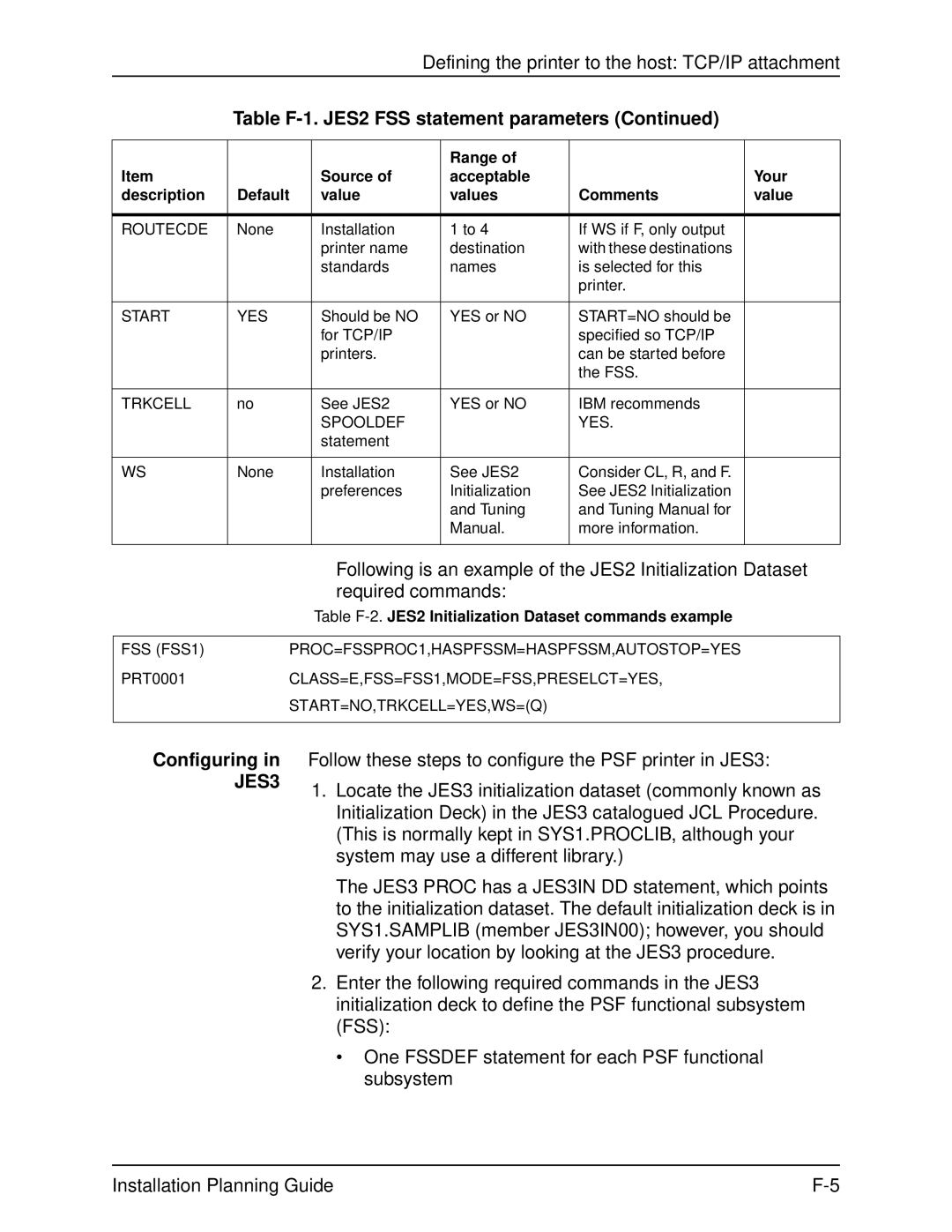
Defining the printer to the host: TCP/IP attachment
Table F-1. JES2 FSS statement parameters (Continued)
|
|
| Range of |
|
|
Item |
| Source of | acceptable |
| Your |
description | Default | value | values | Comments | value |
|
|
|
|
|
|
ROUTECDE | None | Installation | 1 to 4 | If WS if F, only output |
|
|
| printer name | destination | with these destinations |
|
|
| standards | names | is selected for this |
|
|
|
|
| printer. |
|
|
|
|
|
|
|
START | YES | Should be NO | YES or NO | START=NO should be |
|
|
| for TCP/IP |
| specified so TCP/IP |
|
|
| printers. |
| can be started before |
|
|
|
|
| the FSS. |
|
|
|
|
|
|
|
TRKCELL | no | See JES2 | YES or NO | IBM recommends |
|
|
| SPOOLDEF |
| YES. |
|
|
| statement |
|
|
|
|
|
|
|
|
|
WS | None | Installation | See JES2 | Consider CL, R, and F. |
|
|
| preferences | Initialization | See JES2 Initialization |
|
|
|
| and Tuning | and Tuning Manual for |
|
|
|
| Manual. | more information. |
|
|
|
|
|
|
|
Following is an example of the JES2 Initialization Dataset required commands:
Table F-2. JES2 Initialization Dataset commands example
FSS (FSS1) | PROC=FSSPROC1,HASPFSSM=HASPFSSM,AUTOSTOP=YES |
PRT0001CLASS=E,FSS=FSS1,MODE=FSS,PRESELCT=YES,
START=NO,TRKCELL=YES,WS=(Q)
Configuring in JES3
Follow these steps to configure the PSF printer in JES3:
1.Locate the JES3 initialization dataset (commonly known as Initialization Deck) in the JES3 catalogued JCL Procedure. (This is normally kept in SYS1.PROCLIB, although your system may use a different library.)
The JES3 PROC has a JES3IN DD statement, which points to the initialization dataset. The default initialization deck is in SYS1.SAMPLIB (member JES3IN00); however, you should verify your location by looking at the JES3 procedure.
2.Enter the following required commands in the JES3 initialization deck to define the PSF functional subsystem (FSS):
•One FSSDEF statement for each PSF functional subsystem
Installation Planning Guide |
